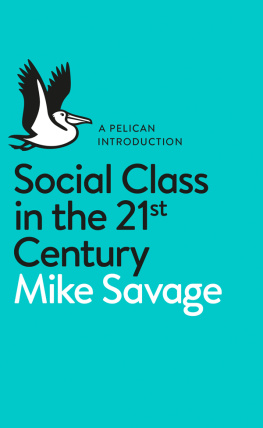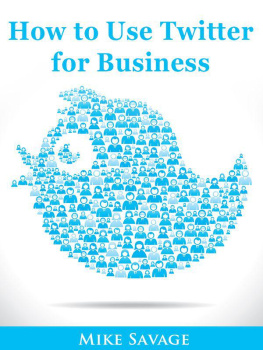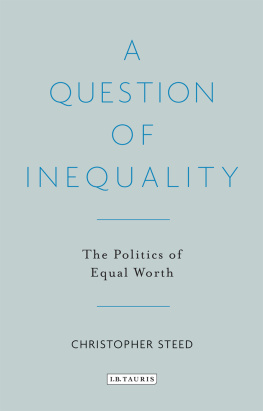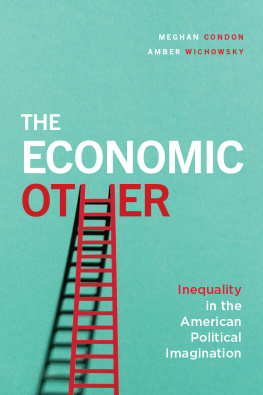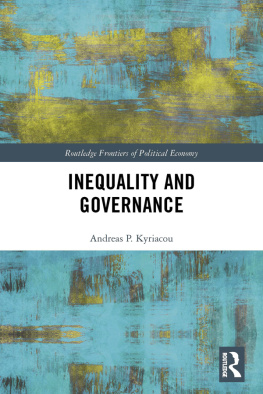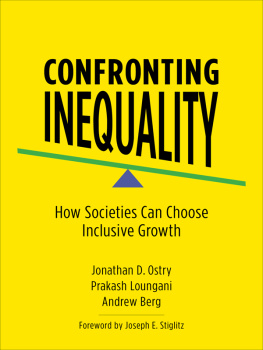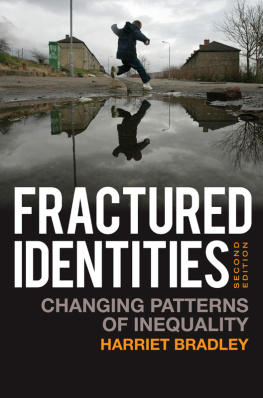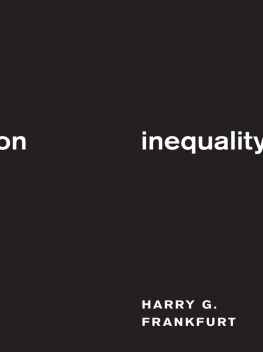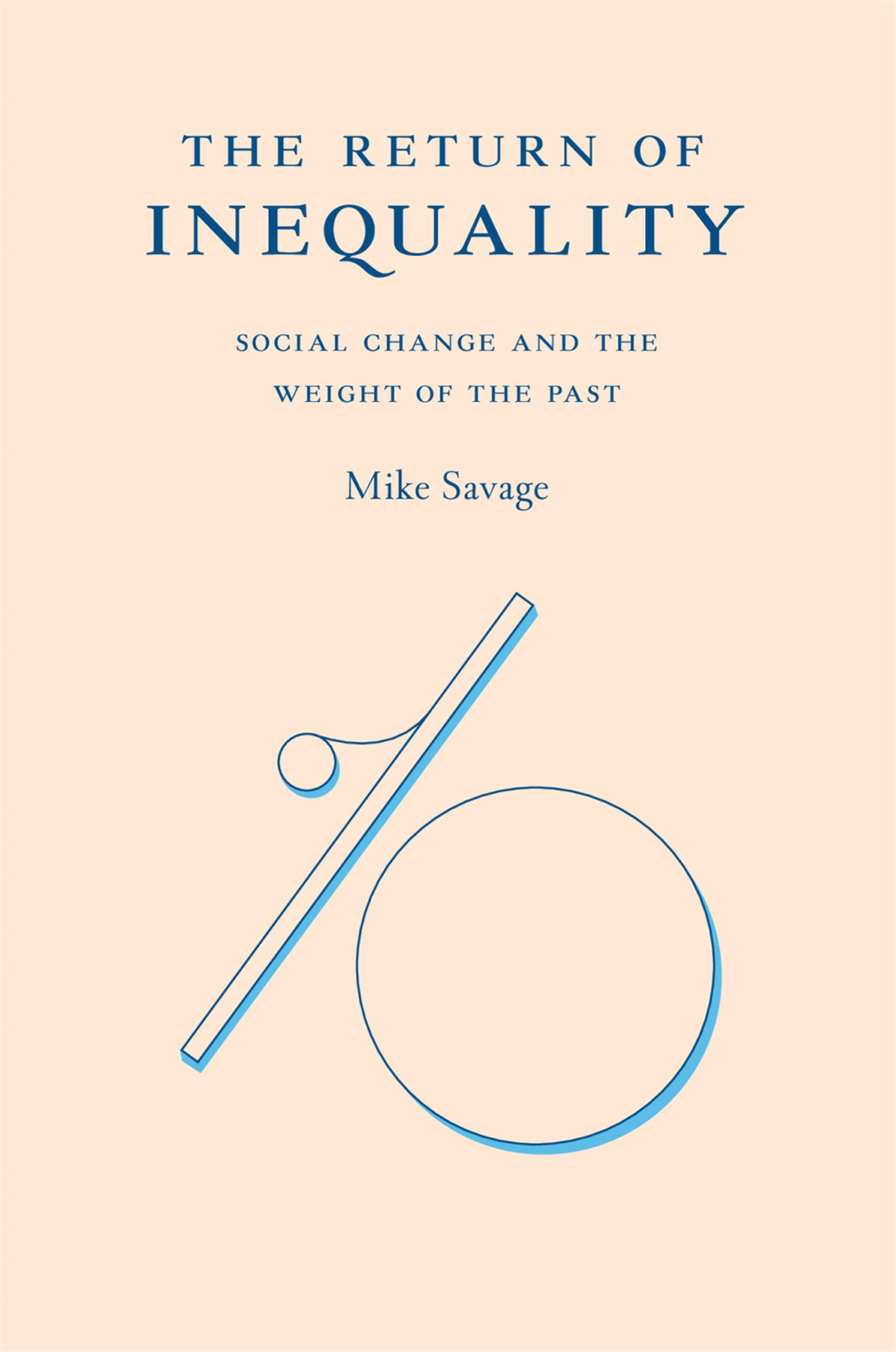Names: Savage, Michael, 1959 author.
Title: The return of inequality : social change and the weight of the past / Mike Savage.
Description: Cambridge, Massachusetts : Harvard University Press, 2021. | Includes bibliographical references and index.
Subjects: LCSH: Income distributionHistory21st century. | Equality21st century. | Regression (Civilization)21st century. | Social change21st century.
In the past decade, it has become commonplacealmost triteto claim that inequality is the defining challenge of our time. My book reflects, from a sociological perspective, what kind of challenge this is exactly, and how best to rise to it. I offer a different approach from methods now dominating the social science agenda, which have taken advantage of new data sets and analytical frameworks to concentrate on economic measurement and the listing of the various axes on which inequality operates. Make no mistake, that work is vital, and I draw on it extensively in these pages. But empirical documentation is not, by itself, enough. We need to understand better the wider theoretical and political problems that inequality poses. We are at a crucial moment in human history, and only by grasping the nature of this moment can we realize how inequality is an even more fundamental challenge than it already seems.
My specific entry point derives from my long-term academic and political interests in studying social class as a major axis of inequality. Within the heroic pedigree of socialist politics and Marxist analysis, social class was assigned a preeminent role, not simply as a technical measurement tool but in shaping the course of history itself. I remember well the famous 1979 History Workshop symposium at Oxford, which I attended as an undergraduate history student from the University of York. On that cold, dank evening, shortly after Margaret Thatcher became the British prime minister, I witnessed the doyens of MarxismEdward Thompson, Stuart Hall, Richard Johnson, and otherstear each other apart as they crossed swords over the virtues of structuralist approaches to class. Far from being an esoteric debate, class mattered passionately to these protagonists, because it spoke to the exact historical momenta time when the social democratic consensus that had dominated Britain since 1945 was about to be dismantled.
From this heady moment, class analysis lost the passion it enjoyed that astonishing evening in 1979. During the 1980s a consensus emerged among leading sociologists, such as Anthony Giddens (1990, 1991), Ulrich Beck (1992), and Zygmunt Bauman (2000, 2007), that social class was becoming irrelevant, a throwback to an old industrial era that was being left behind by the rapid pace of globalization, technical change, and the information society. Some keepers of the flame responded by insisting that if class were measured scientifically, it still shaped peoples life chances in fundamental ways (Goldthorpe and Marshall 1992). This defense was effective up to a point, but it took class analysis into a specialized, technically sophisticated sideline, cut off from the wider public resonances that it used to enjoy. Although I engaged with this current of research, I felt keenly that the passion of studying class, which had drawn me to it amid the political debates of the 1970s, had been lost. Methodological sophistication had come at a high price.
In the years after 2000, class analysis began to enjoy a revival in Britain, as well as in other parts of the world. By 2010, a nascent tradition of cultural class analysis had been identified, which was attuned to how class inequality was experienced and identified the pervasive force of cultures of stigma, shame, and entitlement (see W. Atkinson 2010). This was also part of a wider reflection on how class needed to be analyzed in their intersections, especially around gender, race, and ethnicity (for example, Skeggs 1997; Devine et al. 2005; Bennett et al. 2009; Rollock et al. 2014). Nonetheless, this revival of interest in class in no way prepared me for the remarkable public reception of the Great British Class Survey (GBCS), which attracted a storm of interest in Britain, and indeed internationally, when it was published between 2013 and 2015. The intense debate that the GBCS provoked showed that class analysis was fully back in the spotlight, in public and not just in academic debate. It spoke to the huge public thirst for understanding what social class inequality meant in the early twenty-first century.
Despiteor perhaps because ofthis intense interest, the GBCS turned out to be a challenging experience. I was subject to more political and academic criticism than at any previous time in my career. The GBCS had touched a sensitive nerve in two very different ways. First, it animated debate on the stuff of inequality, on what inequality was made of. What are social classes? How many are there? How are they measured? How do they relate to other inequalities? These issues had dominated the sociological debateand indeed, had directed my own previous research on social class. But a second issue was rather drowned out in academic debate, though it was much more visible in the media and public reception. This concerned what the GBCS told us about now-time. What was society in 2013? How does it compare with previous periods? What fears and anxieties should we have in the current situation? Are we more divided than ever? In short, it spoke to a pessimistic and anxious mindset that clearly had considerable resonance among the public.
Since 2013, the feeling of the urgency of inequality has gathered pace, with gender and race being major flashpoints of contention and resistance. The #MeToo movement, initially fueled by accounts of film producer Harvey Weinsteins systematic sexual abuse, mobilized millions of women determined to fight sexism and misogyny. The Black Lives Matter movement drew attention to sustained brutality against black people, not only in the United States but also around the globe. It drew attention to the enduring power of institutional racism and the long-term and persisting role of historical forces, especially the power of empire and slavery. There is something compelling about the way that, even in the much-vaunted technological and digital arena of twenty-first-century global capitalism, historical figures have taken on such symbolic power. The Victorian imperialist Cecil Rhodes, US Confederate generals, and long-dead slave traders have gained major contemporary significance.
The animating concern of my book is to take stock of this apparently inexorable rise of interest in inequality and reflect on what it tells us about social change. This requires us to downplay the significance of social class, to recognize the power of many intersecting axes of inequalityrace, ethnicity, and gender being especially significantand to place all these concerns within a long-term perspective that recognizes the renewal of longer-term historical forces that for decades have complacently been seen as relics of the past. The coronavirus pandemic of 2020 demonstrates all too clearly the need for this perspective. It is not incidental that this moment of danger has become so closely identified with the entrenchment of inequality. Shortly after the virus took hold in Europe and North America, news stories about its inegalitarian effects began appearing. Wealthy urbanites left for their second homes in the countryside, whereas poor and working-class residents were cooped up in small apartments. Domestic abuse surged. Black and ethnic minoritieswho were disproportionately likely to be working on the front linewere more likely to suffer from both the virus itself and the economic fallout that was left in its wake. In this situation, the proliferation of inequality discourse was a means of rendering the strange familiar. It made sense of the sheer horror of the pandemic by anchoring it back to familiar discourses of inequality that are now routine. Yet it also made the familiar strange, by showing that we were in uncharted territory and lacked a clear view of the course ahead.


